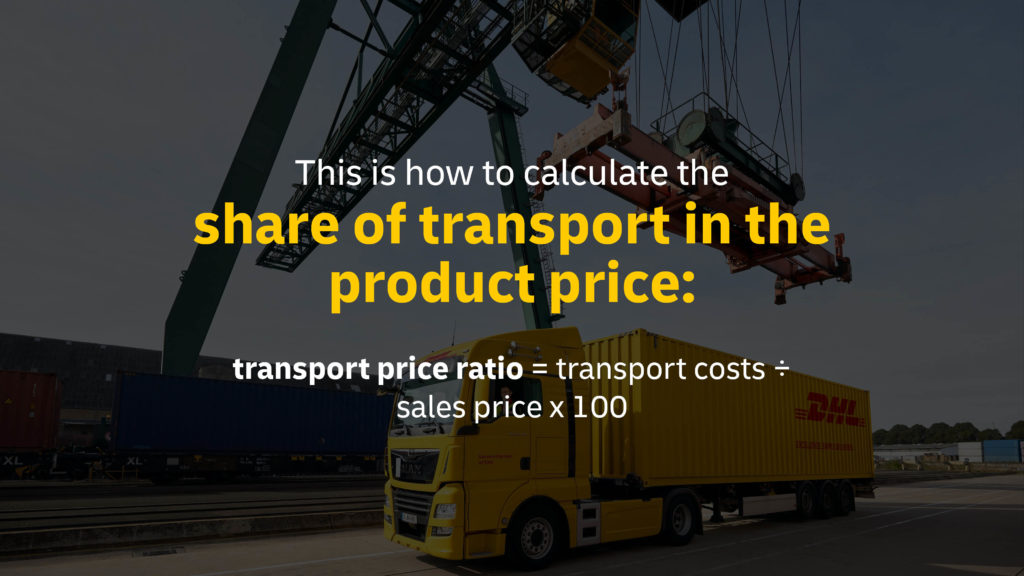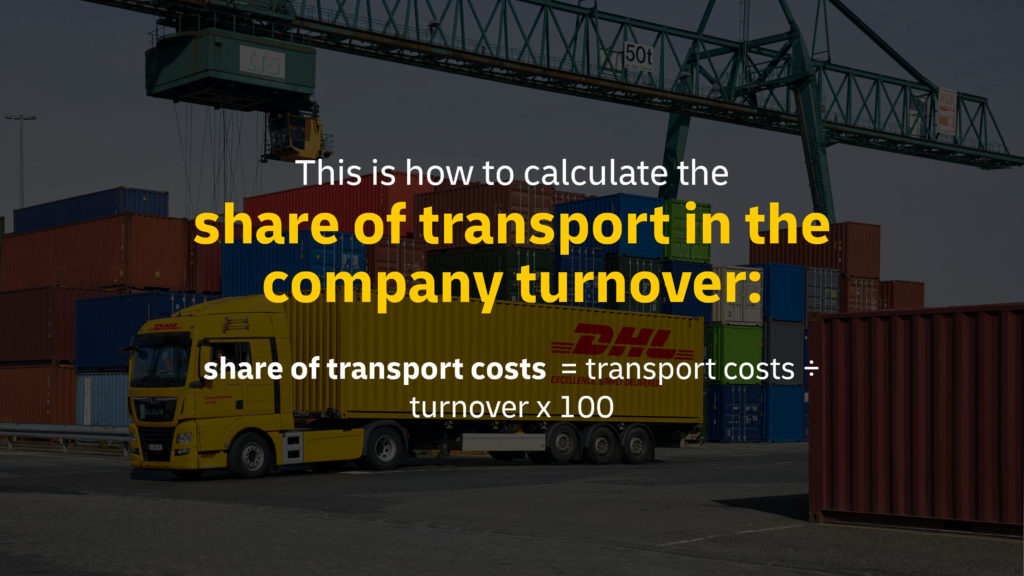
In every industry, there are indicators that can be used to quantify the success of a company and to implement the necessary process optimizations: so-called key performance indicators (KPIs). What are KPIs in the logistics sector, how are they calculated, and how can the values be improved to achieve greater efficiency? We provide an overview of the most important logistics KPIs.
What Are KPIs and What Do They Tell Us?
KPIs are key performance figures on the quality and efficiency of individual operational processes or company divisions. When KPIs are collected, this serves as an objective performance measurement: what progress has been made and what goals have been achieved? Processes are monitored on the basis of KPIs and can be analyzed with these figures. The aim is to increase business efficiency and quality and, by doing so, to enhance the profitability of a company.
To achieve this goal, the collected data must be relevant and meaningful. Huge amounts of data are generated in business operations. Evaluating all of them consumes resources and is hardly effective. To qualify as a KPI, the data must be highly significant for a specific business area or process step – and suitable for precisely measuring quality and productivity in these areas. For this reason, every industry has its own individual KPIs.
Operational KPIs for Logistics
Obviously, there are KPIs that have an overarching and industry-independent relevance: e.g., financial KPIs on sales and profit or human resources KPIs on personnel requirements and costs.
The focus here will be on specific logistics KPI examples that are particularly informative for the performance of logistics services. Most KPIs can be assigned to either warehouse logistics or transport logistics, with the two areas merging in operations.
The Most Important Transportation KPIs
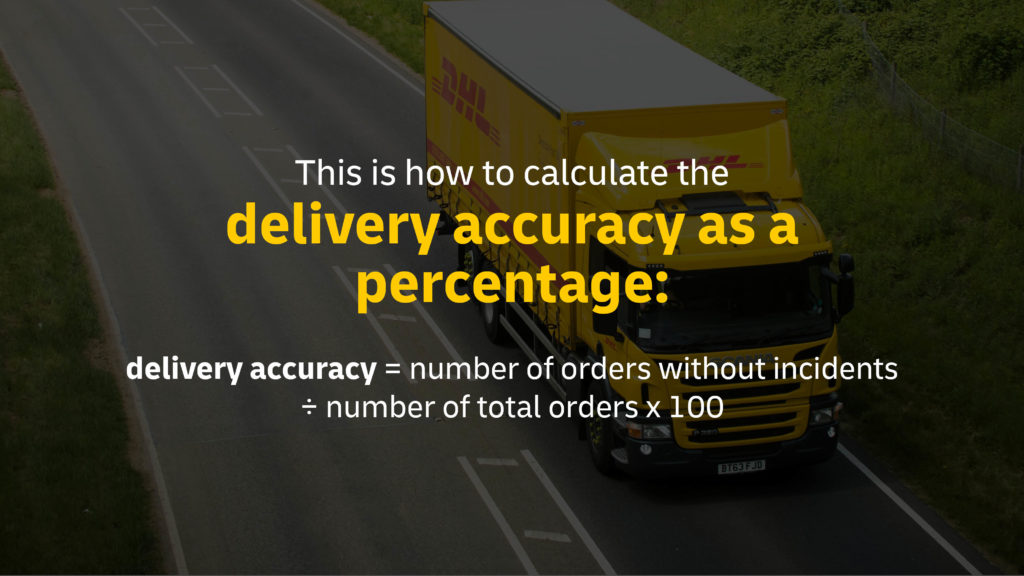
Delivery Accuracy
Delivery accuracy specifies the percentage of delivery orders that were handled without incidents – from intake of orders to final delivery. Possible and avoidable incidents are, for example, incomplete, faulty, or damaged deliveries or delivery delays.
This is how to calculate the delivery accuracy as a percentage:
delivery accuracy = number of orders without incidents ÷ number of total orders x 100

Delivery Time
Supposedly banal, but central to customer satisfaction: the punctual delivery of shipments. For consignors, the on-time shipping rate is important: were the goods really dispatched on the planned day of shipment? For the performance of transport logistics providers, the adherence to delivery dates is crucial: was the shipment actually delivered on the scheduled date?
This is how to calculate the on-time shipping/delivery rate as a percentage:
on-time shipping rate = number of deliveries dispatched on time ÷ number of total deliveries x 100
on-time delivery rate = number of deliveries arrived on time ÷ number of total deliveries x 100
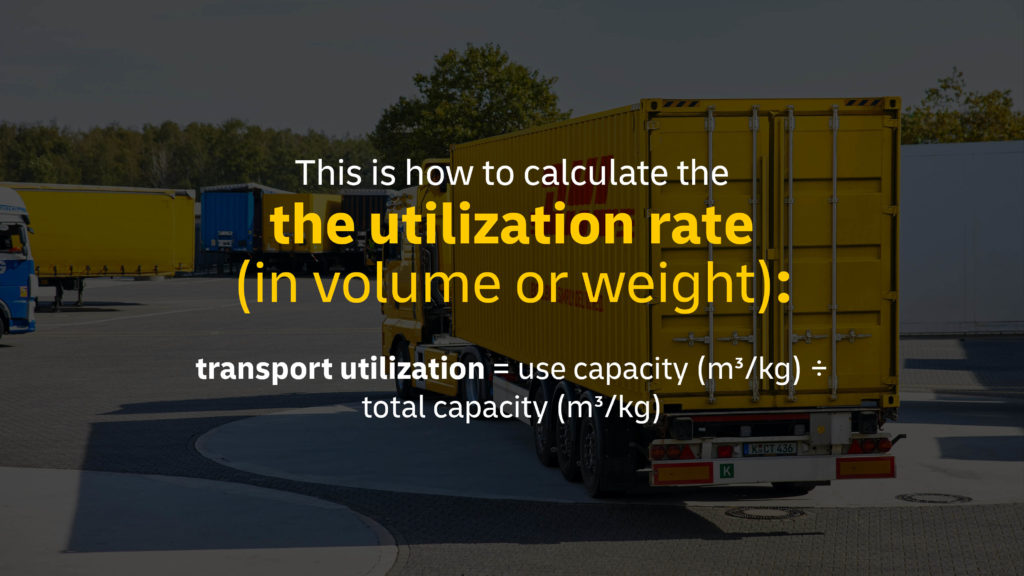
Utilization Rate of the Vehicle Fleet
For road freight providers, this KPI is of major importance: how is the available vehicle capacity being utilized? Are there overcapacities? If there is too little transport capacity, the existing capacity must either be utilized more efficiently – e.g., through optimized load planning – or greater capacity is required.
This is how to calculate the utilization rate (in volume or weight):
transport utilization = use capacity (m3/kg) ÷ total capacity (m3/kg)
Transportation and Delivery Costs
Transportation costs have a different connotation for logistics service providers than for consignors – while it is in any case desirable to keep them low. For service providers, these are all costs incurred in processing a transport order from acceptance to completion, to which administration or warehousing must be added on top of the actual transport costs (personnel, materials, fuel, etc.). The aim of the KPIs in this context is to reduce costs while ensuring high service quality.
For manufacturers or sellers, it is important to know how transport costs relate to sales and what proportion of the total price of a product is accounted for by transport. Through this knowledge, potential savings can be discovered.
This is how to calculate the share of transport in the product price:
Transport price ratio: transport costs ÷ sales price x 100
This is how to calculate the share of transport in the company turnover:
Share of transport costs = transport costs ÷ turnover x 100
The Most Important KPIs in Warehouse Logistics

Storage Costs per Unit
Building maintenance, acquisition and maintenance of vehicles as well as equipment, energy costs, and personnel costs are reflected in storage costs. The KPI for warehousing costs refers to the ratio of costs and actually stored inventory in a given period. The most significant KPI is storage costs per unit in the warehouse. This can be used to identify inefficient processes in the warehouse so as to reduce overall costs.
This is how to calculate the storage cost per unit:
storage cost per unit = total storage costs ÷ nominal warehouse capacity x occupancy rate

Inventory Accuracy
If the actual inventory does not match the inventory in the ERP system, additional costs and accounting problems may arise. In addition, the quality of service suffers from these deviations of electronically recorded inventory from physical inventory, as commitments to customers may not be met. For this reason, inventory accuracy is an important performance indicator in warehouse logistics.
To reduce negative impacts, the inventory accuracy must be continuously high. The inventory accuracy indicator specifies how large the discrepancy is between the goods recorded in the ERP system and the goods present in the warehouse. If the KPI shows a high inaccuracy, the existing inventory management system must be improved.
This is how to calculate the inventory accuracy (ideal value is 0):
inventory accuracy = number of goods recorded in the system - number of actually existing goods

Warehouse Space Utilization
Space utilization is the warehouse equivalent of the fleet utilization in transport. Only an efficiently utilized warehouse is economical. Overcapacities generate additional costs, which are reflected in the storage costs per unit (see above).
Is the available capacity being used appropriately? What is the ratio of available and actually used space and how can space utilization be optimized? Opportunities for improvement include, for example, synchronized management of incoming and outgoing goods or advanced warehouse technology.
This is how to calculate the warehouse space utilization:
warehouse space utilization = utilized space x 100 ÷ total storage space
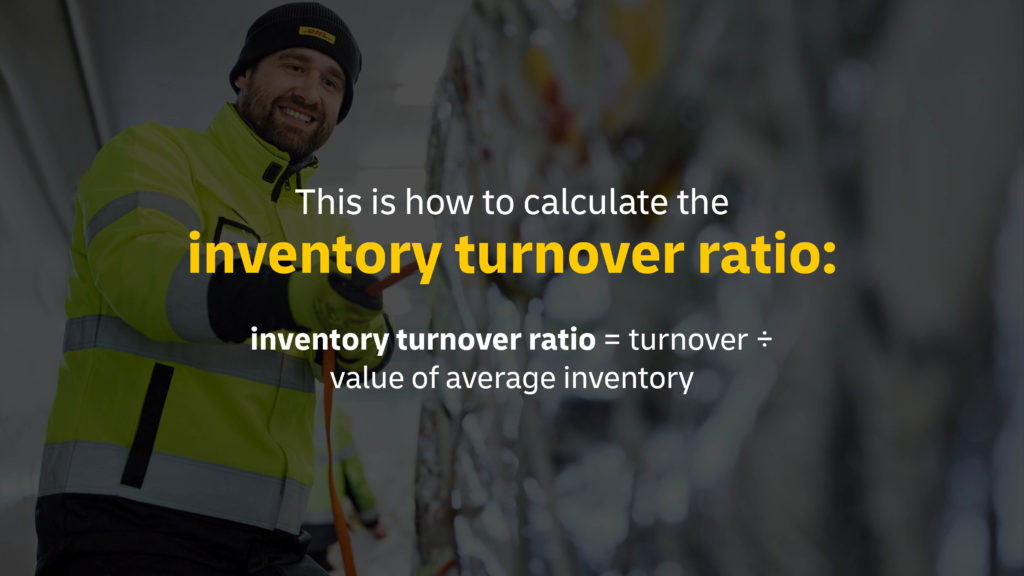
Inventory Turnover Ratio
The inventory turnover ratio is an important indicator for retailers and manufacturers. It provides information on how often inventories are transshipped within a given period of time. The ratio is usually applied to a specific product in inventory: how often does this product leave the warehouse and is replaced by new goods?
The higher the value for the inventory turnover rate, the more frequently a particular product is sold and reordered. Low KPIs for stock turnover indicate that there is excess stock in the warehouse. On the other hand, a high inventory turnover ratio means that the company’s capital is used effectively by keeping inventories at an appropriate level, thus saving costs: This is because a high turnover ratio corresponds to a short storage period.
This is how to calculate the inventory turnover ratio:
inventory turnover ratio = turnover ÷ value of average inventory

Inventory-to-sales Ratio
Inventory and sales must be in an appropriate ratio. The inventory-to-sales ratio indicates how high the proportion of sold goods is in relation to the total inventory in the warehouse. This ratio between the goods actually sold and the existing stock can be used to determine undersupply and overstock. If the indicator swings in favor of sales, this is an indication of high demand to which the company can now respond – especially if the inventory-to-sales ratio is analyzed in conjunction with the inventory turnover ratio.
This is how to calculate the inventory-to-sales ratio:
inventory-to-sales ratio = number of goods sold ÷ number of goods in stock

Inventory Range
The inventory-to-sales ratio provides another important metric for retailer logistics: inventory range. Simply put: how long will my stock last? Do my own inventories meet demand and: for how much longer? This KPI determines whether measures (reordering, production) are necessary to bring inventories back in line with demand.
This is how to calculate the inventory range:
inventory range = inventory ÷ demand per day
KPI for the Quality of Logistics Services
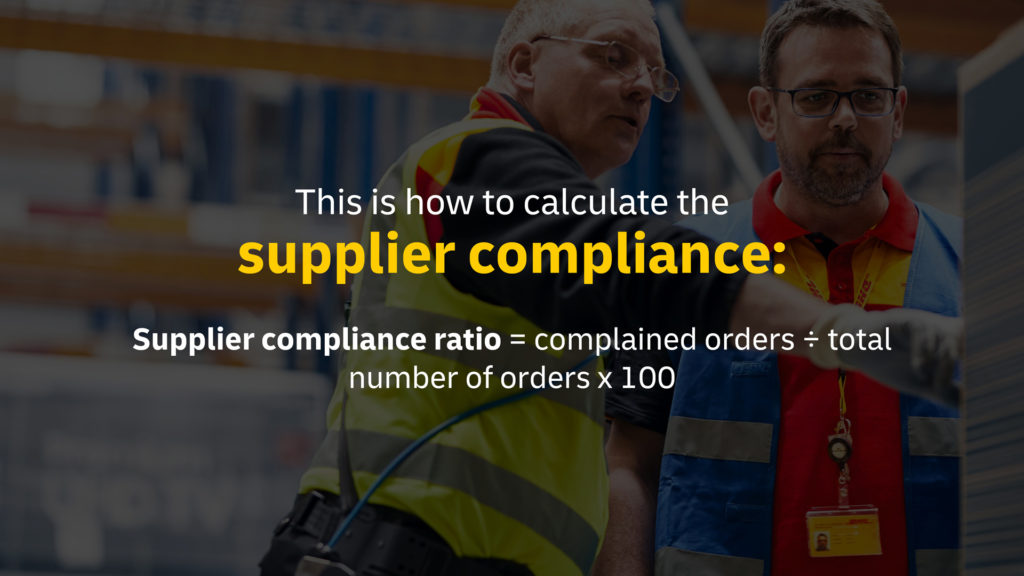
Supplier Compliance
A consignor will determine how efficiently and reliably the service provider is working via the supplier compliance ratio. It can also be used to check whether delivery security is guaranteed. The compliance indicator allows for comparing different service providers with each other. The higher the compliance ratio of the suppliers, the better the assigned logistics tasks are fulfilled and the fewer delays or damages occur.
The figure for logistical service quality is calculated as follows:
Supplier compliance ratio = complained orders ÷ total number of orders x 100
Key figures can be an effective tool for identifying and, if possible, eliminating deficiencies in operational processes. This requires an industry-specific interpretation of the data, because inventory turnover ratios and space requirements, for example, may vary by industry. While identifying KPIs is the first step in facilitating decision making, it does not take it away from decision makers.
At DHL Freight, we strive to draw the right conclusions from these specific KPIs. Above all, we want the supplier compliance to always be as positive as possible thanks to our efforts.
Frequently Asked Questions
- What are Key Performance Indicators?
KPIs are essential figures for evaluating the quality and efficiency of a company. KPIs can be used to analyze processes and improve performance. The aim is to increase efficiency and quality in a company.
- What are the KPIs in logistics?
KPIs specific to logistics mainly relate to warehouse logistics and transport logistics: for example, the KPIs for transport costs or inventory turnover ratio. Poor values can be improved through optimized processes – and thus the overall business performance.
